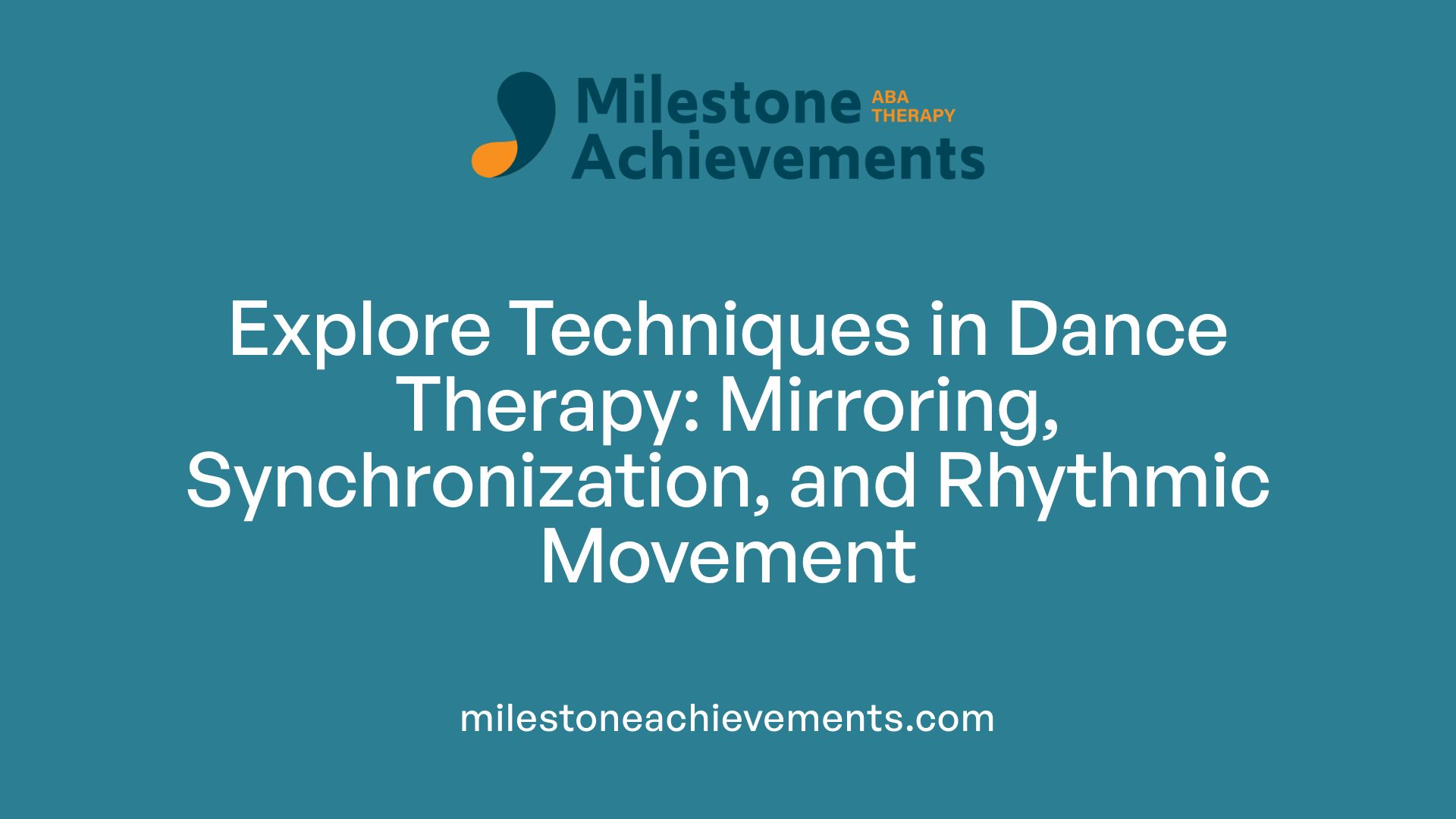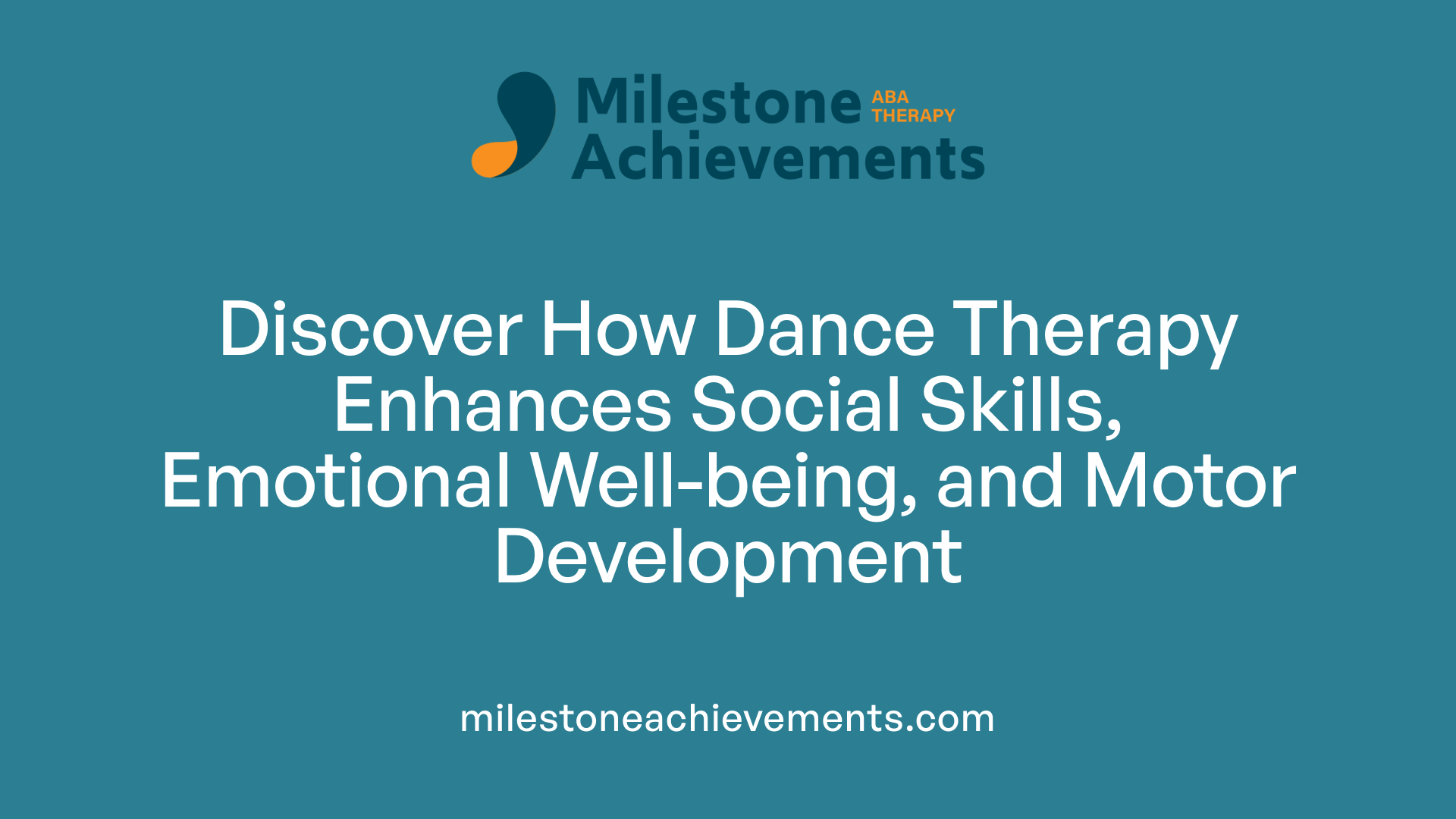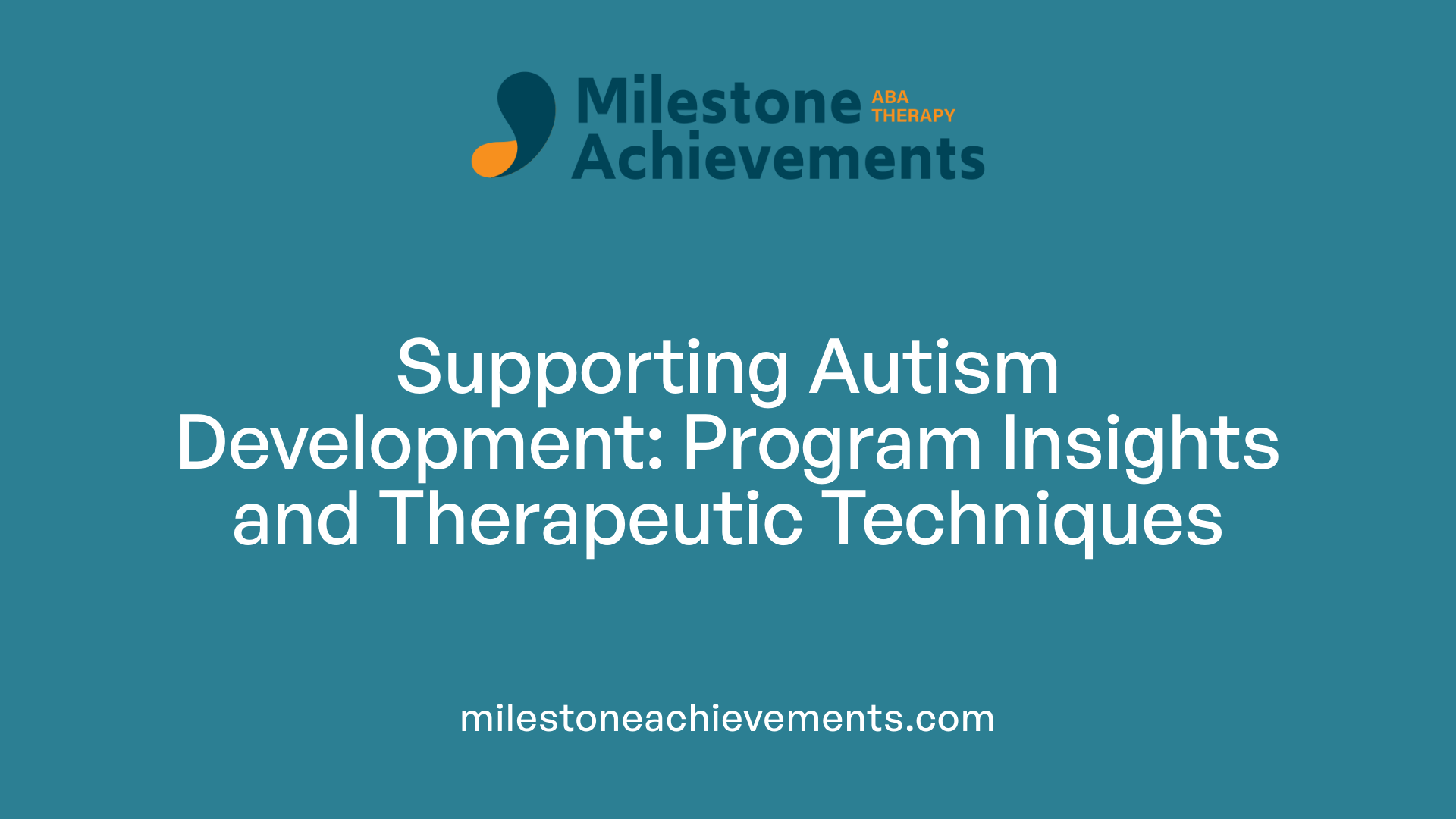
Dance Therapy Benefits for Autism
Unlocking Potential: How Dance Therapy Transforms Autism
Introduction to Dance Therapy and Its Relevance for Autism
Dance therapy, also known as dance/movement therapy (DMT), is a holistic psychotherapeutic approach that uses movement, dance, and body-based interventions to support emotional, cognitive, social, and physical development. Its unique focus on embodied experiences makes it particularly effective for individuals with autism spectrum disorder (ASD), providing a non-verbal medium for expression, communication, and connection. Increasing evidence suggests that dance therapy can significantly improve various aspects of functioning in autistic individuals, promoting greater independence, emotional regulation, and social integration.
Overview of Dance Therapy Techniques and Approaches

What techniques are used in dance therapy and how do they facilitate development?
Dance therapy incorporates a variety of methods designed to enhance social and emotional skills, especially in individuals with autism. Techniques like mirroring, synchronization, rhythm, and reciprocal interaction serve as foundational tools.
Mirroring involves therapists and participants copying each other's movements, which fosters empathy and connection. Synchronization helps improve coordination and encourages social engagement by aligning movements in time with others. Rhythm provides a structured pacing that can regulate emotions and foster focus.
Reciprocal interaction, such as turn-taking and shared movement activities, promotes social awareness and responsiveness. These methods build imitation skills, body awareness, and emotional attunement.
How does body awareness contribute to the development of children with autism?
Improving body awareness through dance enhances children's ability to recognize and control their movements. This can improve proprioception—the sense of body position—and coordination.
Strengthening body awareness supports children in better communicating their needs through body language, increasing social engagement. It also aids in self-regulation by helping children manage impulsivity and emotional responses.
Developing these physical skills creates a foundation for improved cognitive processing and social interaction, essential components in supporting overall development in autism.
Benefits of Dance Therapy for Individuals with Autism Spectrum Disorder
 Dance therapy is gaining recognition for its role in supporting individuals with autism spectrum disorder (ASD). It promotes the integration of emotional, social, cognitive, and physical aspects, leading to many positive outcomes.
Dance therapy is gaining recognition for its role in supporting individuals with autism spectrum disorder (ASD). It promotes the integration of emotional, social, cognitive, and physical aspects, leading to many positive outcomes.
One of the significant advantages is the enhancement of social skills, communication, and emotional regulation. Through structured activities like mirroring and synchronization, dance therapy helps individuals improve their ability to connect with others. Techniques such as rhythmic movement and shared body language foster emotional expression, empathy, and social bonding, which are often challenging for those with ASD.
Research indicates that dance and movement interventions can decrease negative symptoms like anxiety and depression. Participants often experience a boost in psychological well-being, increased self-awareness, and a better understanding of their own and others' emotional states.
Moreover, dance therapy can improve motor development and body awareness. Moving rhythmically to music or dance routines can help develop coordination, balance, and motor planning, which frequently pose difficulties for people with ASD.
Dance also serves as a non-verbal communication channel, especially beneficial for non-verbal or semi-verbal individuals. Body-based expressions enable them to convey feelings and needs effectively, enhancing overall communication skills.
In collaborative settings, such as group dance therapy sessions, participants develop cooperation and social engagement. This collective experience fosters trust and mutual understanding, which can translate into everyday social interactions.
Furthermore, dance therapy positively impacts emotional wellbeing by allowing honest expression and providing a fun, engaging way to cope with stress. It reduces symptoms of anxiety and depression, contributing to a more resilient mindset.
In summary, dance/movement therapy offers a holistic approach that supports emotional, social, and physical development in individuals with ASD. Its ability to foster body awareness, emotional expression, social bonding, and well-being makes it a valuable complement to traditional treatments, helping individuals lead more connected and fulfilling lives.
Developmental Support and Application in Autism Programs
 How does dance therapy support development in children with autism?
How does dance therapy support development in children with autism?
Dance therapy fosters growth in children with autism by promoting social, emotional, and physical skills through body-based, nonverbal interactions. It helps improve social responsiveness, communication, and emotional regulation by engaging children in movement activities that emphasize mirroring, synchronization, and sensory exploration. These techniques encourage self-awareness, empathy, and attunement to others, which are often challenging for children on the spectrum. Evidence from various assessments, including the Autism Behavior Checklist (ABC) and Social Responsiveness Scale (SRS), indicates reductions in repetitive behaviors and improvements in social behaviors.
By providing a safe and welcoming environment, dance therapy enables children to express their feelings through movement, helping to decrease anxiety and facilitate peer engagement. The focus on embodied experiences enhances sensory-motor integration, improves coordination and balance, and helps children develop a richer movement vocabulary. Overall, these interventions support holistic development, enabling children with autism to communicate more effectively and build stronger social connections.
What specific programs exist for children with autism?
Several structured dance and movement programs are designed to meet the unique needs of children with autism. Autism Movement Therapy (AMT) is one such example, using music and dance routines to stimulate brain activity, improve motor skills, and address behavioral challenges. Protocols like dance/movement psychotherapy (DMP) often include sessions focused on mirroring, rhythm exercises, and group movement activities.
These programs typically incorporate activities such as choreographed dance moves, improvisation, and rhythmic exercises that promote synchronization, coordination, and social interaction. Group activities may involve playing musical instruments, performing choreographed routines, or engaging in rhythmic movement games, all tailored to enhance body awareness, social bonding, and emotional regulation. By systematically combining these elements, such programs work toward improving communication, reducing maladaptive behaviors, and fostering a sense of community for children with autism.
Techniques like grouping matching tasks, turn-taking, and shared movement help children learn social cues and cooperation. Overall, these programs aim to cultivate social skills, motor abilities, and emotional resilience, contributing significantly to their overall growth and quality of life.
Evidence and Effectiveness of Dance Therapy for Autism
Several scientific studies and systematic reviews underscore the positive impact of dance therapy on individuals with autism spectrum disorder (ASD). Research findings demonstrate improvements across various domains, including social skills, emotional regulation, and behavioral symptoms.
A notable example is a 3-month intervention that combined music therapy and dance movement therapy (DMT) within family settings. This program led to reductions in autism severity and enhancements in social interactions, as measured by standardized tools such as the Childhood Autism Rating Scale (CARS) and Autism Treatment Evaluation Checklist (ATEC). The results were confirmed through rigorous statistical analysis, affirming the therapy’s beneficial effects.
Meta-analyses like those conducted by Takahashi et al. (2019) consolidate evidence supporting the usefulness of dance and movement-based interventions. These reviews indicate that DMT facilitates improvements in social responsiveness, emotional regulation, and body awareness among autistic individuals.
Techniques such as mirroring, rhythmic movement, and synchronization are central to the therapeutic process. These methods promote social engagement and emotional understanding by fostering shared bodily experiences. Moreover, tele-dance therapy during the COVID-19 pandemic has shown that remote interventions can still support social development and strengthen non-verbal communication skills.
On a neurophysiological level, dance therapy is thought to enhance neural synchrony—the coordinated activity of brain areas involved in social cognition and emotional regulation. This neural engagement can translate into better social responsiveness and a reduction in core autism symptoms.
Collectively, evidence from diverse research designs confirms that dance therapy is a valuable approach for supporting autistic individuals, helping improve their social, emotional, and physical functioning.
Final Thoughts: Embracing Movement for Autistic Development
Dance therapy represents a promising, multifaceted intervention for autism spectrum disorder that promotes holistic development. Its benefits span physical, emotional, and social domains, supported by growing scientific evidence and practical applications worldwide. As a non-verbal, body-centered modality, it offers an inclusive and engaging approach to enhancing quality of life, fostering connection, and unlocking the potential within each individual with autism. Recognizing its unique contributions and integrating dance therapy into comprehensive treatment plans can facilitate meaningful progress, encouraging greater social participation and emotional resilience for children and adults alike.
References
- Dance promotes positive benefits for negative symptoms in autism ...
- Dance Therapy for Autism: What are the Benefits?
- [PDF] Dance/Movement Therapy & Autism
- The Potential Benefits of Dance Movement Therapy in Improving ...
- Autism and Dancing: What are the Benefits?
- Benefits and challenges of tele-dance movement psychotherapy ...
- Understanding Dance Therapy for Autism and Its Importance -
- Possibilities of Dance Therapy and its Comprehensive Benefits for ...


Partner with us on your child's journey
Milestone Achievements offers evidence-based ABA therapy to help children with autism reach their full potential. Together we’ll set meaningful goals and celebrate progress every step of the way.
Start ABA Services Today





